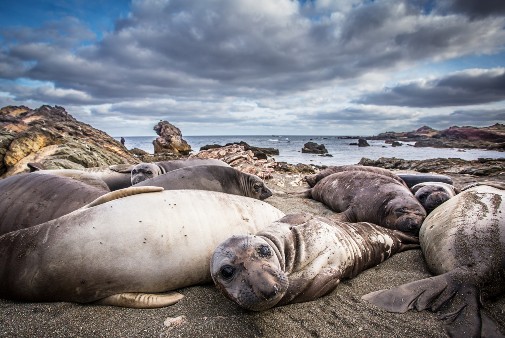Seal species carries “genetic scars” after being hunted to the edge of extinction, new research reveals
Posted on 27 September 2024
 Northern Elephant seals. Image credit:Bielefeld University, Martin Stoffel
Northern Elephant seals. Image credit:Bielefeld University, Martin Stoffel
Hunted for the oil in their blubber, genetic analyses suggest that the hundreds of thousands of northern elephant seals that lived in the Pacific Ocean had been reduced to a population of fewer than 25 animals by the start of the 20th century.
The population has since recovered to around 225,000 individuals, but the new research – led by the universities of York and Bielefeld (Germany) and published in Nature Ecology and Evolution – suggests the drastic population decline led to the loss of many genes from the northern elephant seal’s gene pool, impacting their genetic diversity and health.
Threat to survival
The researchers, who combined genetic data, health records, modelling of population sizes and genetic simulations to carry out the study, did not observe the same pattern in the closely related southern elephant seal, which did not experience a near-extinction event.
The findings demonstrate how drastic population declines can squeeze out a species’ genetic diversity, increasing the risk of inbreeding and threatening its survival. They offer important insights for species conservation and ecosystem management, the researchers say.
Unique population history
Senior author of the study, Professor Kanchon Dasmahapatra, from the Department of Biology at the University of York, said: “Our study illustrates how a species’ unique population history shapes its genetic diversity.
“The highly reduced genetic diversity, including the loss of beneficial gene copies, may impair the ability of northern elephant seals to cope with future environmental changes, including those caused by anthropogenic climate change, changes to the species’ habitat, or even natural threats such as disease outbreaks”.
Lead author of the study, Professor Joseph Hoffman of Bielefeld University, added: “All individuals of a species carry some harmful mutations, though their effects are usually hidden. However, inbred individuals may face health issues as these mutations become exposed. ‘We looked at several key health traits in these seals, including body weight, blubber thickness and disease susceptibility. To our surprise, we found no signs of health problems related to inbreeding. We believe the severe population decline may have eliminated many harmful mutations.”
Explore more news

Researchers use robotics to find potential new antibiotic among hundreds of metal complexes
Tuesday 23 December 2025

Text messages could be key to helping TB patients quit smoking, according to study
Monday 22 December 2025

Teenage niece may have shaped Jane Austen’s Persuasion, new study suggests
Monday 22 December 2025

Project to examine how AI is changing the way science is done
Wednesday 17 December 2025

Researcher leads global push to cut tobacco harms in people with mental ill health
Monday 15 December 2025
Media enquiries
About this research
Genomic and fitness consequences of a near-extinction event in the northern elephant seal is published in Nature Ecology & Evolution.
The research was carried out by scientists from the Universities of Bielefeld, Düsseldorf, Cambridge, California Santa Cruz and Davis (USA), Hampton (USA) and York as well as the Centre for Biotechnology at the University of Bielefeld, the British Antarctic Survey (UK), the Northwest Fisheries Science Centre (Seattle, USA) and the Alan Turing Institute (UK).
